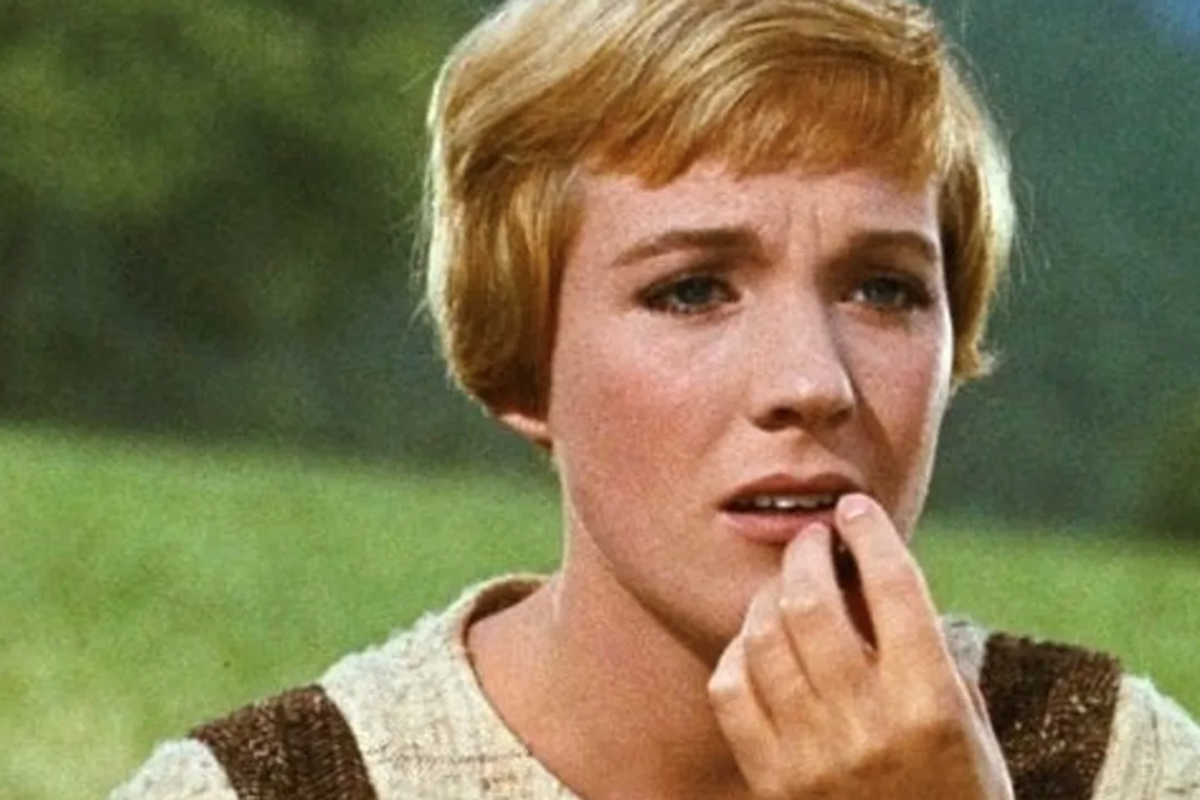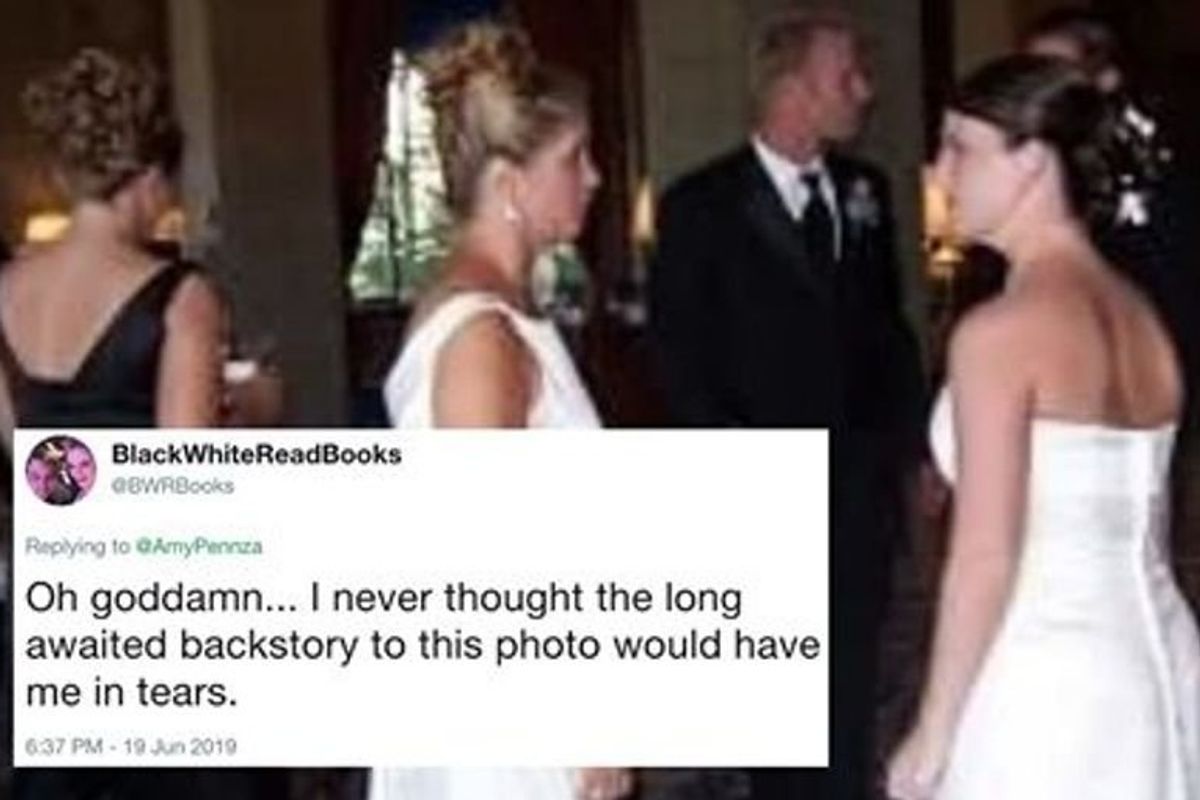Sex trafficking is happening in the U.S. — and young people need to know about it.
Have you witnessed sex trafficking? Your first response is probably "no." But many of us have seen it — we just didn't realize it at the time.
Maybe you remember a friend that suddenly started coming to school with much nicer clothes and a new cellphone, which she said were "gifts" from someone older. Or you may recall that guy who seemed a little bit too old to be dating a classmate, even if she was "technically 18." Maybe you encountered someone's sketchy "older friend" at a party who had the hookup for drugs or alcohol, or a classmate who wanted to “introduce you" to an unfamiliar crowd.
It might have been the woman who hung around the bus stop for no clear reason, the man who was chatting up teens at rest stops, or a friend's "modeling manager" making promises that just seemed too good to be true.
The reality is that sex trafficking doesn't just happen in faraway places. In fact, young people are sexually exploited — forced to perform sexual acts for money or other resources like food, shelter, or support — in every state in the U.S. This even includes sex trafficking of youth under the age of 18.
The reality is, though, that we aren't always quick to recognize it.

Learning what sex trafficking looks like is the first step to ensuring it doesn't happen to us or someone we care about. These 15 facts about youth sex trafficking and exploitation in the U.S. are a great place to start.
1. Yes, sexual exploitation could happen to anyone — including you.
While some youth, like those who are homeless or transgender, are especially vulnerable, the reality is that victims do exist across every demographic. They could be the class valedictorian, the boy who lives across the street from you, or the captain of the cheer squad.
“The victims that I come in contact with come from all different walks of life," says Mirielle Milne, Youth Catalyst for MANY and Advocate for The Jonah Project. “But I do think people get it in their mind that it is a certain type of person."
Traffickers don't discriminate and they're experienced in manipulation. They're looking for a person's vulnerabilities, and if they're able to find them, virtually anyone can be a target.
Photo by Eric Ward/Unsplash.
2. Traffickers may take on a generous and caring persona as part of a tactic called "grooming."
“Grooming" follows a few predictable steps. First a victim is targeted, usually because they appear to be struggling emotionally, have lower self-esteem, or need resources like a job, money, or a place to live.
The trafficker then establishes trust by befriending the victim all while learning more about them, like where they live, who their family and friends are, and what their insecurities might be.
3. And at first, the behavior of a sexual trafficker might not seem threatening at all.
Traffickers know that before they can exploit someone, they first have to earn their trust.
For example, a victim might be led to believe that a person they've connected with online just wants to be a friend. They might even help them through a difficult time. According to Milne, this kind of behavior is designed to make victims feel cared for, special, and even protected.
But this “friend" will gradually become a little more than friendly, perhaps even making grand, romantic gestures and promises.
Photo by Tess Nebula/Unsplash.
4. Trafficking can even begin with something that seems harmless, like a job opportunity, gift, or innocent “favor."
For example, a trafficker posing as a modeling manager might set up a careful ruse by taking a victim to photoshoots and gigs that seem perfectly legitimate. Other times, traffickers might offer to help a struggling teen by buying them clothes or lending them money. Sometimes, it's even a family member that will lure youth in with a “job," insisting they need help to make ends meet.
This is all in an effort to make the victim feel as if they “owe" something to the trafficker, which they'll use later on to pressure and control their victim.
Arash Ghafoori, Executive Director at the Nevada Partnership for Homeless Youth (NPHY), says it's that “need" that becomes the entry point into exploitation. “[Traffickers] lure youth into victimization — whether it be through love, or through drugs, or through support," he explains. “[Whatever youth] are desperately seeking."
Youth Survivor, Kristi House Project GOLD.
5. But sexual exploitation doesn't always happen overnight.
Part of why exploitation is so sinister is that it can happen gradually, making it more difficult to see at first. According to Lenore Jean-Baptiste, Project Coordinator at NPHY, some traffickers take a year or more to lure their victims and earn their trust before ever trying to sexually exploit them. Other times, an exploitative family member or peer might take advantage of the trust they've already earned to manipulate victims.
6. The trust they earn allows them to slowly escalate their abuse.
As a trafficker becomes a more central part of their victim's life, they begin to isolate them from family and friends. This can involve pitting them against their loved ones, or even controlling their phone and internet usage.
When the victim becomes completely dependent, the trafficker then demands sexual acts as repayment for the “debt" owed.
As Ghafoori explains, “As that dependency — whether it be from a relationship or a resource point of view — is developed, it turns into the sexual exploitation … these are used as tools for trade."
7. And traffickers are getting smarter about how they find and learn about their victims, too.
Social media is a tool often used by traffickers. Not only is it easy to find and contact victims through social media, it's easy to gather information about them, and keep track of their whereabouts and their support system.
“Youth are not [always] going through the person's page to see who they are," explains Jean-Baptiste.
“They introduce themselves via social media, and a lot of times, [they're] promising careers," she continues. At a time in which self-made stars are born online, the prospect of a modeling gig coming from Instagram doesn't seem so far-fetched.
Photo by Clem Onojeghuo/Unsplash.
8. And once they have information on their victims, traffickers can blackmail them.
Many traffickers use threats to keep victims under their control. They might threaten to harm a victim's family members or friends, or claim that they'll publish photos or videos of the abuse to shame and expose their victim.
Some traffickers coerce victims into having children as well, and will blackmail victims using their children as leverage, either by threatening to take them away or harm them.
9. Fear of law enforcement can make it difficult for victims to reach out for help, too.
Traffickers can also take advantage of an existing fear of law enforcement, making claims that victims won't be believed, or that they will be arrested for prostitution or drug use if they come forward.
People of color who might have an existing fear of police brutality struggle even more with this. “Now we're talking about historical trauma between communities [of color] and police officers," Jean-Baptiste says. “A lot of times traffickers can use those kinds of stories and experiences to make individuals feel fearful."
10. Self-blame can also make it difficult to leave even though it's never the victim's fault.
Many victims feel responsible for the abuse and exploitation they've endured, which can, in turn, make them believe they're not victims at all. Self-blame is often a big part of the trauma they experience. They feel that, by accepting money, gifts, or friendship, the abuse was their own fault.
Photo by Tim Mossholder/Unsplash.
But even if they feel that way, victims are never to blame. “It doesn't matter if you got money, it doesn't matter if you got to keep all the money," Jean-Baptiste says. “If you felt you had to engage in that activity for any survival or need … then it's exploitation."
Advocates like Milne agree, affirming that when we're talking about youth, sexual exploitation is never a job or a choice — and certainly never a victim's fault.
Traffickers use powerful abuse tactics to ensure that victims will give into their demands, and that manipulation is designed to be difficult to identify and resist. The only person responsible for abuse is the perpetrator of that abuse — no matter what a victim does or doesn't do.
11. Trauma can even be powerful enough to drive victims back to their traffickers after they've escaped their control.
If you've ever seen a victim of abuse and wondered why they didn't just leave or why they went back, it's a phenomenon known as “trauma-coerced bonding."
This is an emotional attachment that victims form with their abusers, and it's unfortunately very common. Traffickers' initial acts of kindness and generosity make a strong impression on their victims. As the exploitation worsens, the trafficker can keep up that image by switching back and forth between positive attention and abusive behavior to keep victims hooked.

“We're trying to tell [these youth] that this person is a trafficker… how do you say that to somebody about the person they've been having dinner with every single night for the last year?" says Jean-Baptiste. “It's hard because they've now had a relationship… [sometimes with] years involved."
12. But there is hope and support waiting for victims.
Despite these obstacles, help for victims does exist. “There is help and there are people that are looking for [you] and do care," Jean-Baptiste says.
If you believe that you or someone you know might be at risk or is being victimized, the National Human Trafficking Hotline can help. You can text 233733, use the chat feature on their website, or call them at 888-373-7888. They can connect you with local organizations and support to figure out your next steps.
If there's any possibility that an abusive person has access to your phone or internet history, clear your internet history, and consider using a payphone or borrowing someone else's phone instead.

13. Recognizing the red flags can make a big difference, too.
Knowing what to look for, and being aware of what healthy relationships do and don't look like, can be lifesaving for young people.
For example, Jean-Baptiste advises caution when someone offers you a gift. Before accepting anything, always ask if there's an expectation to pay that person back or reciprocate.
And if anyone tells you to do something with your body or pressures you, it's time to reach out for support. “You should have the full right to consent to what you do with your body," she says.
14. Don't allow a trafficker to be the first person to validate someone who's struggling.
If you're not a victim yourself, it's important to check in with your peers who may be having a tough time. If a trafficker is the first person to reach out to someone who's struggling, those individuals are much more likely to be exploited.
“We need to be more involved in our community," Milne says, noting that young people who feel supported by those around them are less likely to look to an abusive person for validation.
Photo by Helena Lopes/Unsplash.
Jean-Baptiste says this is why young people whose families or communities have all but abandoned them, like homeless and LGBTQ+ youth, are frequent targets. “[Traffickers are] willing to have [a] conversation… that we're not having in our community."
If communities can fill the needs that traffickers try to exploit, those young people would be much safer.
15. And remember, your body is yours. Period.
Too often, it's suggested to young people — especially teens — that they should defer to the adults in their lives when making decisions. However, when it comes to our bodies, the only person in charge is you.

“No one should tell you that you have to do anything with your body… [they have] no right, no access, no privilege," Jean-Baptiste says. “You belong to you."
When we're educated and vigilant, we can make a difference in our communities! Learn more about how to get involved, and help us work towards a future where youth are no longer victimized.



 Tony Trapani received the most important letter of his life, but he didn't see it for 50 years Photo by
Tony Trapani received the most important letter of his life, but he didn't see it for 50 years Photo by  Tony and Samuel didn't waste time thinking about what might have been if he'd seen the letter earlier. Photo by
Tony and Samuel didn't waste time thinking about what might have been if he'd seen the letter earlier. Photo by 
 Christopher Plummer and Julie Andrews on location in Salzburg, 1964
Christopher Plummer and Julie Andrews on location in Salzburg, 1964 


 A German Shepard relaxing in grass.via
A German Shepard relaxing in grass.via  A German Shepard puppy taking a breather.via
A German Shepard puppy taking a breather.via